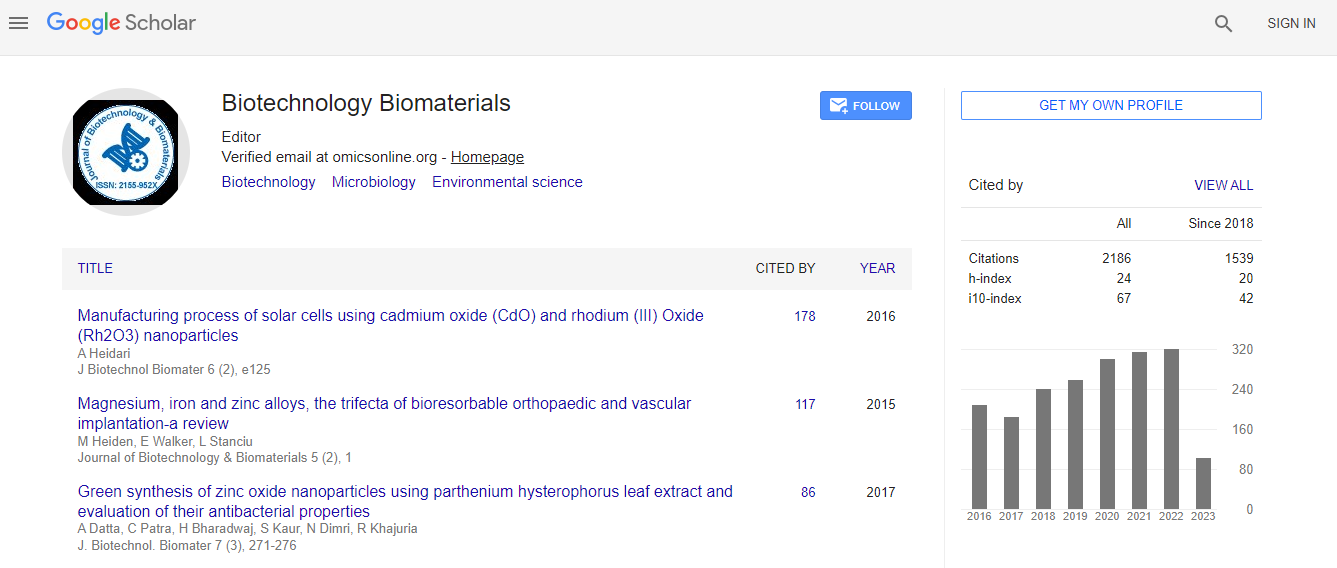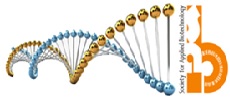Our Group organises 3000+ Global Conferenceseries Events every year across USA, Europe & Asia with support from 1000 more scientific Societies and Publishes 700+ Open Access Journals which contains over 50000 eminent personalities, reputed scientists as editorial board members.
Open Access Journals gaining more Readers and Citations
700 Journals and 15,000,000 Readers Each Journal is getting 25,000+ Readers
Google Scholar citation report
Citations : 3330
Journal of Biotechnology & Biomaterials received 3330 citations as per Google Scholar report
Indexed In
- Index Copernicus
- Google Scholar
- Sherpa Romeo
- Open J Gate
- Genamics JournalSeek
- Academic Keys
- ResearchBible
- China National Knowledge Infrastructure (CNKI)
- Access to Global Online Research in Agriculture (AGORA)
- Electronic Journals Library
- RefSeek
- Hamdard University
- EBSCO A-Z
- OCLC- WorldCat
- SWB online catalog
- Virtual Library of Biology (vifabio)
- Publons
- Geneva Foundation for Medical Education and Research
- Euro Pub
- ICMJE
Useful Links
Recommended Journals
Related Subjects
Share This Page
Anti-angiogenic stigmasterol derivatives
Biotechnology World Convention
Laura Edith Alche
University of Buenos Aires, Argentina Ciudad Universitaria de Buenos Aires, Argentina
Posters & Accepted Abstracts: J Biotechnol Biomater
Abstract
Angiogenesis plays a critical role in initiating and promoting several diseases such as cancer and herpes stromal keratitis (HSK). Herein, we studied the inhibitory effect of two synthetic stigmasterol derivatives (22S,23S)-22,23-dihydroxystigmast-4- en-3-one (compound 1) and (22S,23S) 3���²-bromo-5���±,22,23-trihidroxistigmastan-6-ona (compound 2) on capillary tube-like structures and cell migration in human umbilical vein endothelial cells (HUVEC). We also studied their effect on VEGF expression in IL-6 stimulated macrophages and in LMM3 breast cancer cells. Furthermore, we investigated the anti-angiogenic activity of the compounds on corneal neovascularization in the murine model of HSK and in an experimental model of tumor induced angiogenesis in mice. Both compounds were able to inhibit capillary tube-like formation but only compound 1 restrained cell migration. Also only compound 1 reduced the incidence and severity of corneal neovascularization when it was administered at the onset of HSK and was able to inhibit the development of neovascular response induced by tumor cells in mice skin. Our results show that compound 1 inhibits angiogenesis in vitro and in vivo. This property would not be a consequence of its anti-inflammatory activity already reported since other synthetic molecules belonging to the same family exhibited anti-inflammatory activity but did not behave as anti-angiogenic compounds. Hence, it would be a promising drug for the treatment of those diseases in which angiogenesis represents one of the main pathogenic events.Biography
Email: lalche@qb.fcen.uba.ar

 Spanish
Spanish  Chinese
Chinese  Russian
Russian  German
German  French
French  Japanese
Japanese  Portuguese
Portuguese  Hindi
Hindi 
